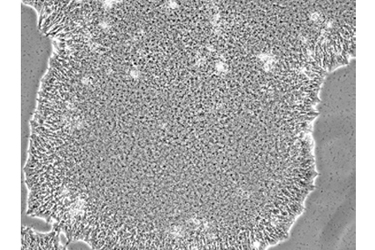Efficient Transition Of Human Pluripotent Stem Cell Cultures From StemFlex™ Medium Into NutriStem® hPSC XF Medium On Matrigel®

Establishing ideal culture methods has been a known challenge in human pluripotent stem cell (hPSC) research since the creation of the first embryonic stem cell line in the late 90s and the discovery of induced pluripotent stem cells in 2006. Traditional protocols often call for highly variable components such as cell feeder layers, due to their ability to aid cell maintenance through secretion of essential growth factors, ECM components, and cytokines including bFGF, TGF-β, laminin, and others.¹ However, as the need for more defined cultures becomes increasingly prevalent, carefully formulated microenvironments have since evolved for more efficient maintenance of cellular pluripotency and purity, in turn reducing the use of feeder layers. Ultimately, as standards for clinical-quality cell use in therapeutic applications are determined, media formulations and culture conditions must be refined and optimized while fully supporting proper phenotype and genetic stability.
Today, there are multiple commercially available serum-free formulations for hPSC maintenance, including Essential 8™, mTeSR™, and StemFlex™ culture media. When compared to Biological Industries’ NutriStem® hPSC Medium, these media contain extensive amounts of growth factors with the intention of maintaining pluripotency and preventing differentiation.²
Get unlimited access to:
Enter your credentials below to log in. Not yet a member of Cell & Gene? Subscribe today.
